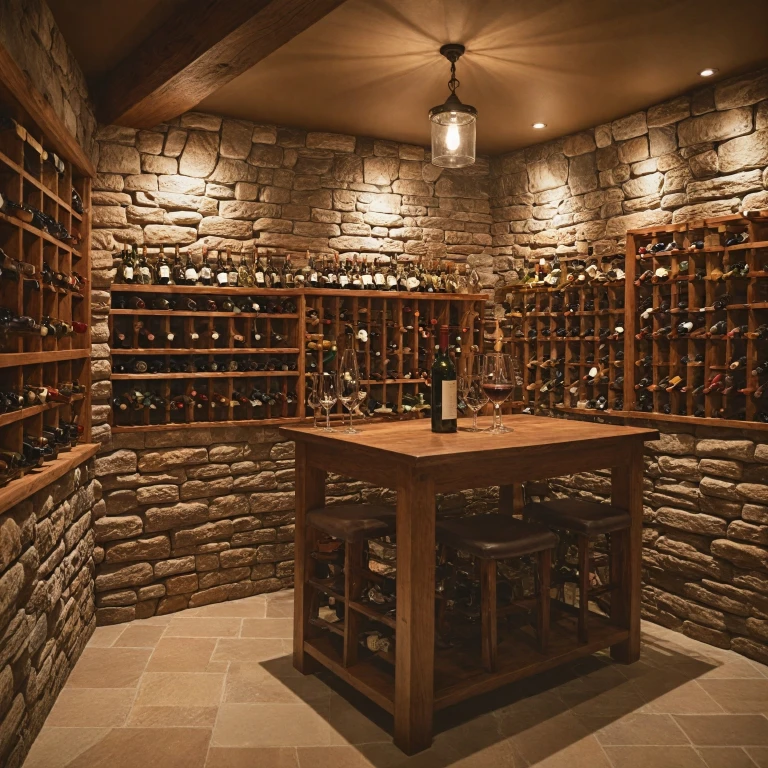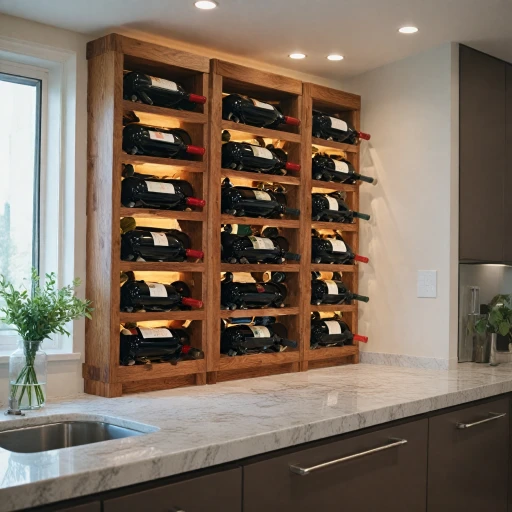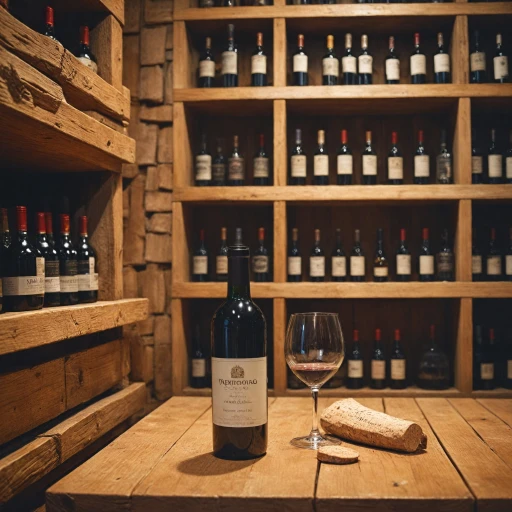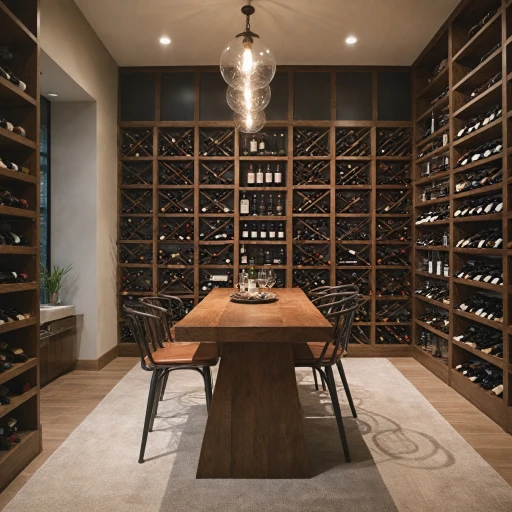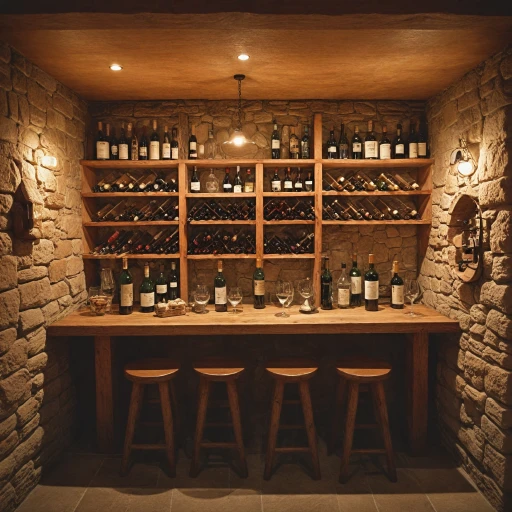Understanding the Basics of Wine Storage
The Necessities of Adequate Wine Storage
To maintain the integrity of your wine collection, understanding the basic principles of wine storage is essential. The nuanced nature of wine requires specific conditions to prevent spoilage and ensure optimal aging. Several factors play a pivotal role in preserving your bottles in top form. Firstly, temperature control is paramount. Wine should be stored at a consistent temperature, typically between 45°F and 65°F. Variations can cause the wine to expand and contract, potentially spoiling it. Additionally, low or high temperatures can adversely affect wine taste and quality. Here, choosing a suitable storage solution, such as a humidity-controlled wine fridge, becomes critical. Equally important is light exposure. Excessive light can degrade the quality of your wine, particularly UV rays, which cause premature aging. Thus, consider storing wine in a dark environment or using a well-designed wine rack that shields bottles from harsh light. Black or matte black racks can also add an aesthetic touch while serving a functional purpose. Humidity, often overlooked, plays a vital role in wine preservation. The ideal humidity level is around 70%, ensuring corks remain moist and provides a tight seal. A dry cork can lead to oxidation, ruining the wine. Wall-mounted or modular wine storage options can help maintain the right environment by optimizing room conditions. Finally, address vibration concerns which can disturb the sediments in wine over time. A stable, vibration-free surface—be it a bamboo or metal wine rack—guarantees stability during storage. Wine racks are available in different designs, from stackable columns to wall-mounted solutions, meeting various needs and price ranges. Proper wine storage extends beyond mere shelving; it's about creating an environment conducive to wine aging. As you delve deeper into wine storage strategies, understanding the role of cork caps in wine storage becomes increasingly important, ensuring both longevity and quality of your cherished collection.Choosing the Right Wine Cooler
Key Considerations for Selecting a Wine Cooler
When it comes to storing your wine collection, choosing the right wine cooler is essential. With a myriad of options available in the market, each offering different features, it's important to consider the specific needs of your wine storage setup.
Price and Features: The price of wine coolers varies significantly depending on their features and capacity. While some may come at a steep regular price, there are great options available for bargain hunters, especially when sales pop up. Consider your budget and what features are non-negotiable for your collection.
Size and Capacity: Wine coolers range from compact units ideal for the kitchen or dining room, to larger models that can hold hundreds of bottles. Consider the number of column bottle configurations you need, as well as whether stackable wine racks are important for future expansion.
Design and Aesthetics: Aesthetics play a key role when the cooler is not only practical but also a display piece. Whether you're looking for a soft matte black finish or a sleek metallic design, the cooler should complement the existing decor of your room.
Installation Options: Depending on your space, you might prefer a wall mounted or freestanding unit. Wall mounted coolers save floor space, while freestanding ones can be more mobile. Think about where in your home or wine room you have the most space and what best suits that area.
Temperature Zones: If you store different types of wine, a cooler with multiple temperature zones is beneficial. Modular wine coolers allow for separate storage environments, ensuring optimal temperature and humidity control for both reds and whites.
With these factors in mind, selecting the right wine cooler becomes a more informed and satisfying decision. Ensuring you have the best setup will go a long way in enhancing the longevity and quality of your wine collection.
Organizing Your Wine Collection
Arranging Your Collection Effectively
Organizing your wine collection is both an art and a skill, especially when aiming to optimize storage solutions. The first step is to identify the storage rack options that suit your space and collection size. Wine racks come in various styles, from compact wall-mounted designs to expansive stackable racks, allowing you to tailor your setup to your available space, be it the dining room or kitchen.
A modular wine rack can be particularly beneficial as your collection grows. These systems allow you to expand your storage capability without having to completely overhaul your setup. Consider racks made from different materials, such as matte black metal, bamboo, or wood, to enhance the aesthetics of your wine display. Additionally, you can choose racks that complement your space, like a column bottle rack for narrow areas or mounted options for unobtrusive elegance.
Maximizing Your Space
The effective use of available room is crucial when organizing your wines. A wall-mounted rack takes advantage of vertical space, freeing up countertops and floors. Remember, the aim is to display your bottles in a manner that not only saves space but also enables easy access and viewing, offering a guided experience as you select your prized bottle for the occasion.
For some, creating a visual statement with their collection is equally important. Prioritize racks that offer a stylish yet efficient means to showcase your collection. Opting for a wine rack in classic black or natural wood tones can complement a variety of room aesthetics while also providing functionality.
Lastly, be mindful of the location's impact on bottle conditions. Placing your wine near heat sources or direct sunlight can degrade the wine over time. Therefore, pairing a strategic placement with controlled storage environments can safeguard the quality and longevity of your collection while ensuring your wine remains a source of enjoyment for years to come.
Addressing Common Wine Storage Challenges
Overcoming Issues in Wine Storage
- Temperature Fluctuations: Temperature changes can be a nightmare for wine storage. Keep an eye on the room temperature and ensure your wine cooler is functioning optimally to avoid spoiling the wine.
- Humidity Levels: Maintaining the right humidity is crucial. Too much humidity can damage labels and promote mold, while too little can dry out corks, affecting the wine inside the bottles. Consider a wine storage solution that offers humidity control.
- Vibrations: Both natural vibrations and those from nearby appliances can disturb the delicate balance of your wine. Place your wine rack or wine cooler in a stable location that's free from frequent vibrations.
- Light Exposure: UV rays from direct sunlight or even some types of artificial lights can affect wine quality. Opt for a wine storage solution or cooler with UV-protected glass or find a shaded area to place your wine racks.
- Space Constraints: Limited space is a common challenge. Utilize stackable or wall mounted solutions such as mounted metal or bamboo wine racks. These can maximize your storage without crowding your space.
- Budget Concerns: Wine storage doesn't have to break the bank. Look for wine racks and storage solutions that offer a balance between price and quality, ensuring you get the best product for your money.
- Organization and Access: It's important to keep your collection organized for both practical use and aesthetic display. Consider modular wine racks that allow you to stack and reconfigure as your collection grows.
Maintaining Your Wine Cooler
Regular Monitoring and Care
To ensure your wine cooler is performing optimally, regular monitoring is key. Investing time in regular maintenance not only protects your wine collection but also extends the life of the cooler, preserving its value and efficiency. Checking the temperature and humidity levels frequently is crucial. Most wine coolers have a digital display, allowing you to easily monitor the conditions inside. Optimal temperatures for storage usually range around 55°F (13°C), while humidity levels should stay between 50-80% to keep corks from drying out, which preserves the wine's integrity.Cleaning and Organizing
Regular cleaning is another vital aspect of maintenance. Dust, debris, and grime can accumulate over time, affecting the cooler’s efficiency and hygiene. Use a soft cloth and a mild cleaning solution to wipe down surfaces inside and out. Pay special attention to bottle racks, where wine, dirt, and particles might settle over time. Organizing your cooler can also contribute to easier maintenance. By using modular wine racks, sectioning off types of wine, and ensuring heavy bottles, like champagne, are placed on lower shelves, you promote airflow and accessibility. Racks made of bamboo or wood not only offer durability but can also provide an aesthetically pleasing look.Troubleshooting Common Issues
Like any appliance, wine coolers can encounter occasional issues. If you notice loud noises or spot temperature fluctuations, it might be time to check the cooling unit's ventilation or inspect for blockages. Ensure that your cooler is not overcrowded, as this can restrict airflow and lead to uneven cooling. Choosing stackable solutions may help. For more persistent issues, consulting the user manual or seeking professional assistance could be required, particularly if the cooler is still under warranty. Taking these precautions will help you get the best out of your investment. By following these maintenance tips, you guarantee a beautifully organized display for your wines, ready for any occasion in your dining room or kitchen, all without the constant worry that comes with poorly maintained wine storage solutions.Long-term Storage Solutions
Ensuring Optimal Conditions for Extended Wine Preservation
Long-term wine storage requires a keen understanding of various elements to maintain the quality and flavor of wine bottles over time. When planning for extended preservation, consider the following strategies:
- Investing in a Durable Wine Rack: Select a wine rack that accommodates your collection size. Modular wine racks are a practical option, allowing you to adjust your storage as your collection evolves. Opt for materials like wood or metal to ensure stability and durability, paying attention to features like matte black finishes for an elegant display.
- Controlling Temperature: Consistently maintaining an appropriate temperature is critical. Aim for a temperature range of 45°F to 65°F. Wine coolers with precise temperature controls are a worthwhile investment, as temperature fluctuations can severely affect wine.
- Humidity Management: Preserving the integrity of corks requires a humidity level of around 60–70%. You may want to integrate humidity-control devices in your storage plan, and some premium wine coolers come equipped with humidity management features.
- UV Protection: Exposure to light, particularly UV rays, can degrade wine quality. Keep wine away from direct sunlight. Opt for storage options that offer UV protection, such as a black-tinted glass door.
- Secure Storing in a Handle-Free Environment: Wine bottles should ideally be stored horizontally, which ensures the corks remain moist, preventing them from drying out and letting air seep in. Consider stackable solutions or wall mounted racks that allow for a sophisticated arrangement in your dining room or kitchen.
- Monitoring Regularly: Regular checks of your wine storage environment are key to catching potential issues early. Be aware of any changes in the storage conditions and adjust as necessary.
Incorporating these elements into your long-term wine storage strategy not only enhances your wine's longevity but maximizes its potential when you finally uncork and savor each carefully preserved bottle.
